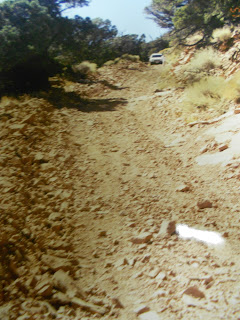However, the one single town in Utah that truly isn't in Utah is Navajo Mountain.
Although this town's trading post, schools, Navajo Tribal office and U.S. Post Office are all at least three to five miles inside the Utah border, that's all there is to Utah about it.
The vast majority of vehicles you will spot in Navajo Mountain sport Arizona license plates.
The area code there is 928, Arizona based.
Also, the U.S. Post Office there states Arizona, instead of Utah.
Navajo Mountain is in southeastern Utah, with Page, Arizona, as the nearest town of significant size.
To reach this community, you have to travel deep into Arizona by way of Page or Monument Valley. Then, between the small Navajo towns of Kaibito and Shonto, just off highway 98, you go north into Utah.
So, the only access to this town is from Arizona. Hence, likely why Arizona dominates this Utah community.
Sitting on the southeast corner of Navajo Mountain, a free-standing, huge, whale looking kind of mountain that rises to 10,388 feet above sea level.
The photos below show: 1. a doctored sign near the community of Navajo Mountain; 2. what it looks like on the top of Navajo Mountain, looking north to Lake Powell; and 3. how rough and rugged the jeep road is up Navajo Mountain.
http://www.navajonationparks.org/permits.htm
Notwithstanding, myself and several friends did officially aquire outdoor permits from the Navajo Mountain Tribal Office and visited its summit in 2005.
Although I had verbal permission days earlier from the area's tribal president to visit Navajo Mountain's summit, it took the explanation of a bet I had with my two buddies that you could see Rainbow Bridge with your naked eye from the top and north side of the Navajo Mountain Summit, to get them to issue us permits.
I did win the bet, as you can easily spot Rainbow Bridge from on top.
A rugged, narrow, winding jeep road accesses the summit of the mountain.
There are some cell towers on top of Navajo Mountain, so it could be argued it is not as sacred to the Native Americans as it used to be.
In fact, boating or camping on the south end of Lake Powell, you likely wont' have any cell phone service unless you can see Navajo Mountain -- a line of sight kind of thing.
Navajo Mountain was originally known as Paiute Mountain until about 1933.
It remains a mysterious place, full of solitude and solace.
The mountain domninates the area landscape and I'm very thanful I was lucky enough to visit it and enjoy its spectacular landscape.




